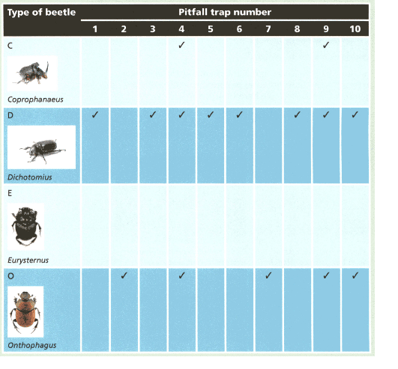Mark Levesley, Chris Meunier, Fran Eardley and, Gemma Young Solutions for Exercise 7: Exercise 7
Author:Mark Levesley, Chris Meunier, Fran Eardley & Gemma Young
Mark Levesley Science Solutions for Exercise - Mark Levesley, Chris Meunier, Fran Eardley and, Gemma Young Solutions for Exercise 7: Exercise 7
Attempt the free practice questions from Exercise 7: Exercise 7 with hints and solutions to strengthen your understanding. Cambridge Lower Secondary Science Stage 7 : Student's Book solutions are prepared by Experienced Embibe Experts.
Questions from Mark Levesley, Chris Meunier, Fran Eardley and, Gemma Young Solutions for Exercise 7: Exercise 7 with Hints & Solutions
EASY
Lower Secondary Stage 7
IMPORTANT
Most owls are nocturnal. What does it mean?
EASY
Lower Secondary Stage 7
IMPORTANT
Explain why owls have very large eyes?
EASY
Lower Secondary Stage 7
IMPORTANT
In part of the Amazon rainforest in Brazil, some students left pitfall traps for one night. The table shows the number of beetles in each trap the next morning.
Look at the figure and find out which animal is not nocturnal.

MEDIUM
Lower Secondary Stage 7
IMPORTANT
Explain why nocturnal mice have excellent hearing?
EASY
Lower Secondary Stage 7
IMPORTANT
Porcupines are nocturnal animals that have a covering of spines. Suggest why they have spines?
EASY
Lower Secondary Stage 7
IMPORTANT
How does a sea anemone protect itself when the tide goes out?
